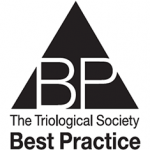Reducing opioid prescribing to children after tonsillectomy may be possible without increasing risk of complications, according to a new study.


Reducing opioid prescribing to children after tonsillectomy may be possible without increasing risk of complications, according to a new study.

Investigators show the feasibility of using smartphones to detect middle ear fluid in children with suspected acute otitis media and acute otitis media with effusion.
A mandated consent form prior to opioid prescription was associated with decreased overall opioid prescriptions without a resultant increase in postoperative complications in pediatric patients.
The vocal training and regular examinations by otolaryngologists that children who sing in choirs receive may pay off beyond voice training to benefit their overall vocal health.

Multiple therapeutic options may be effective for treating mild pediatric OSA including observation, management with anti-inflammatory medications, and surgery.
The findings of this study support the feasibility of using the nasal methylome for future clinical applications, such as predicting the development of asthma among wheezing infants.
Myringotomy with or without tube placement and mastoidectomy have the highest cure rates for pediatric acute mastoiditis.

Multidisciplinary teams can dramatically improve time to diagnosis, cost reduction, and clinical outcomes.

Patients with EVA are commonly discouraged from playing contact sports due to concerns about a possible risk for sudden hearing drops or vestibular dysfunction following even minor head trauma.
This list clarifies expert opinion on which patient, disease, procedural, and outcome measures may be important to consider in any pediatric airway reconstruction patient.